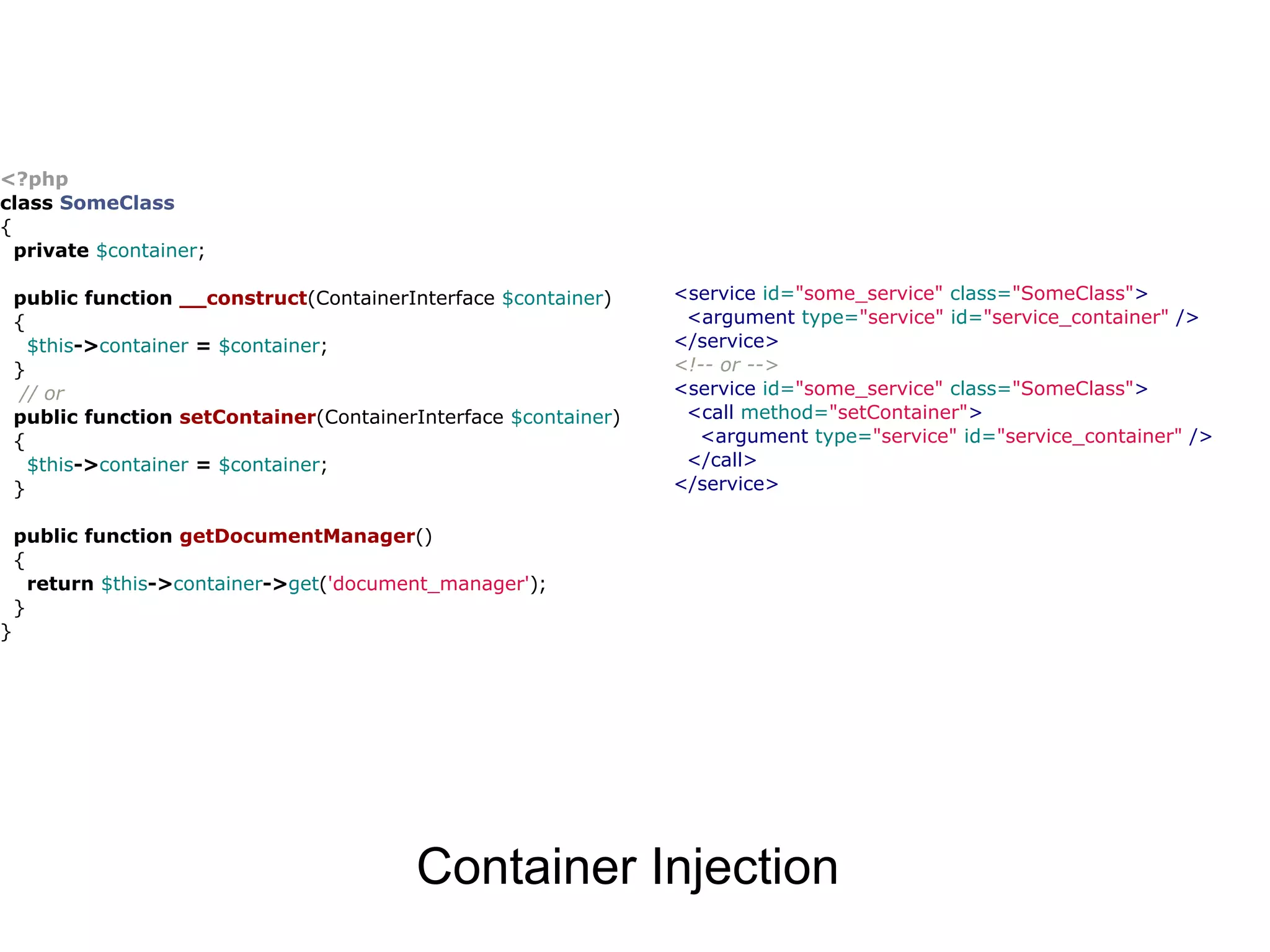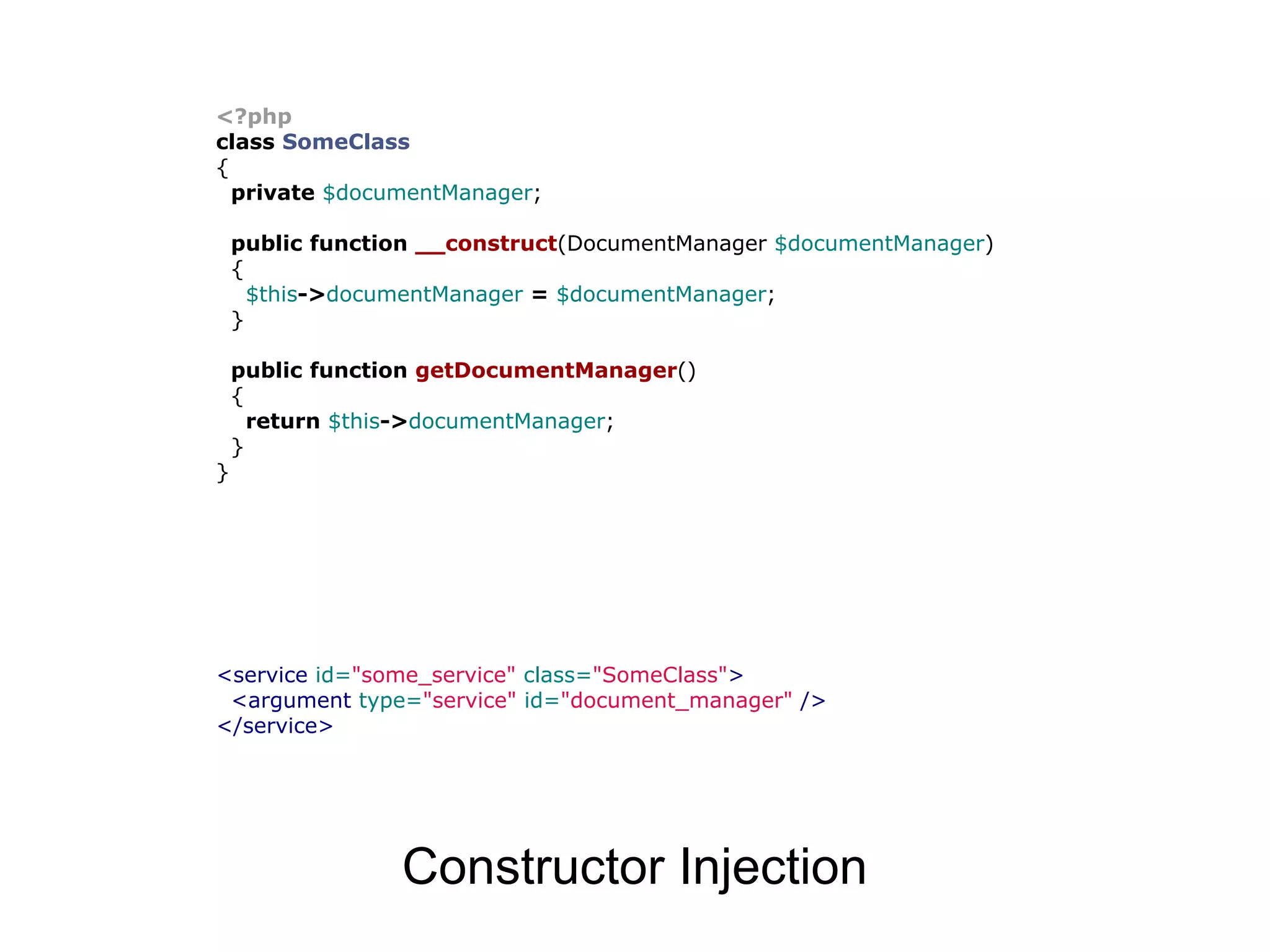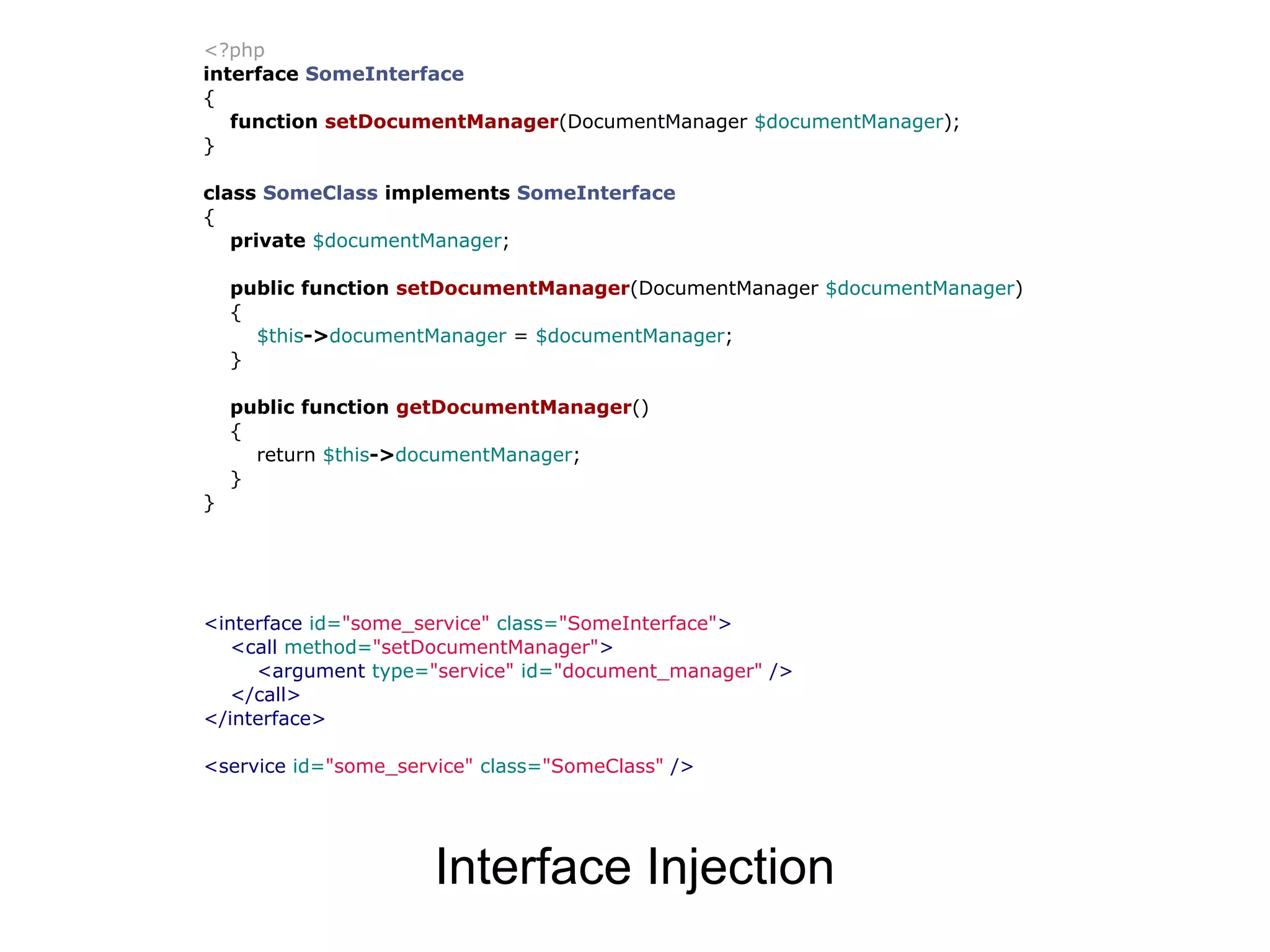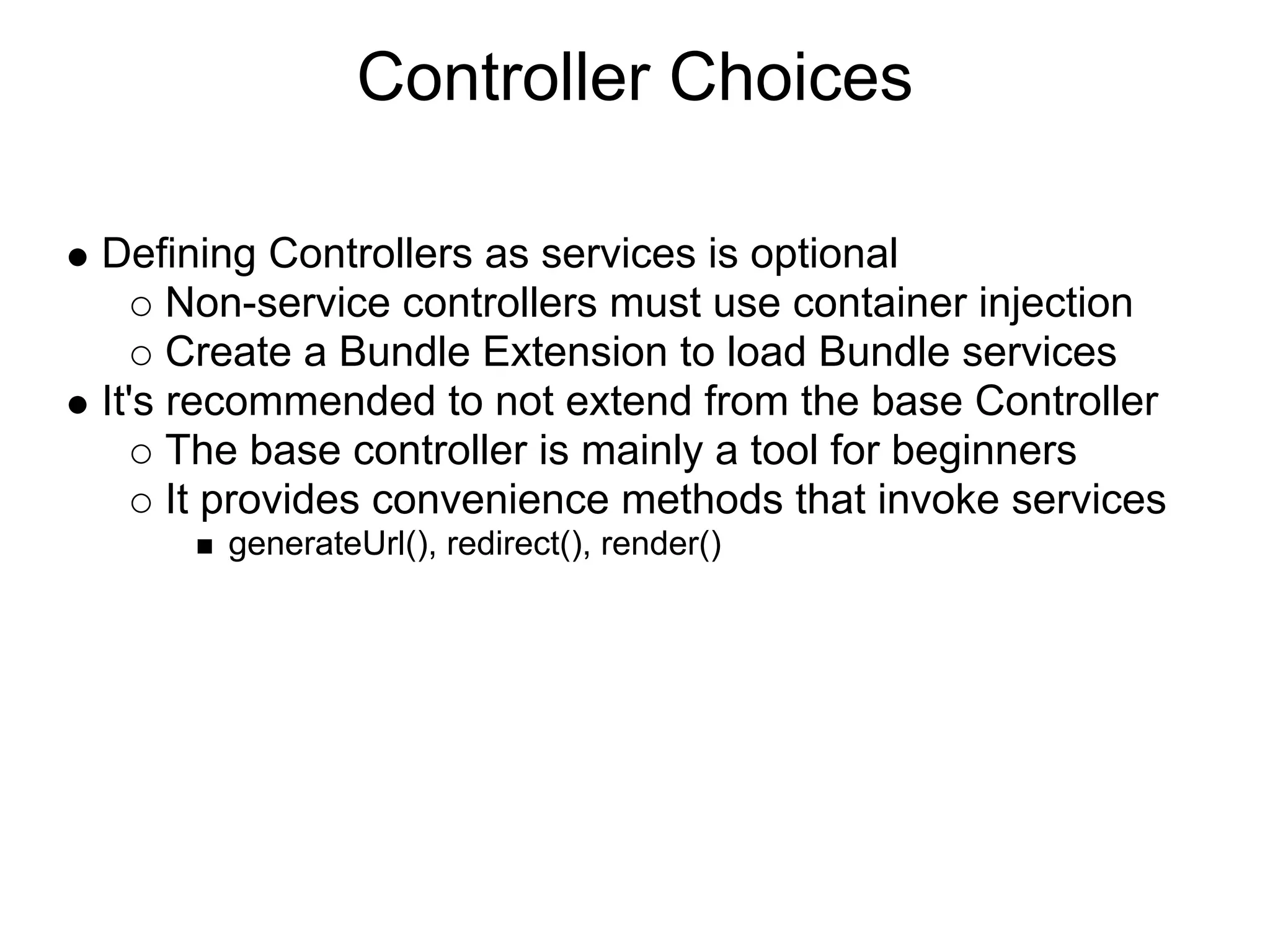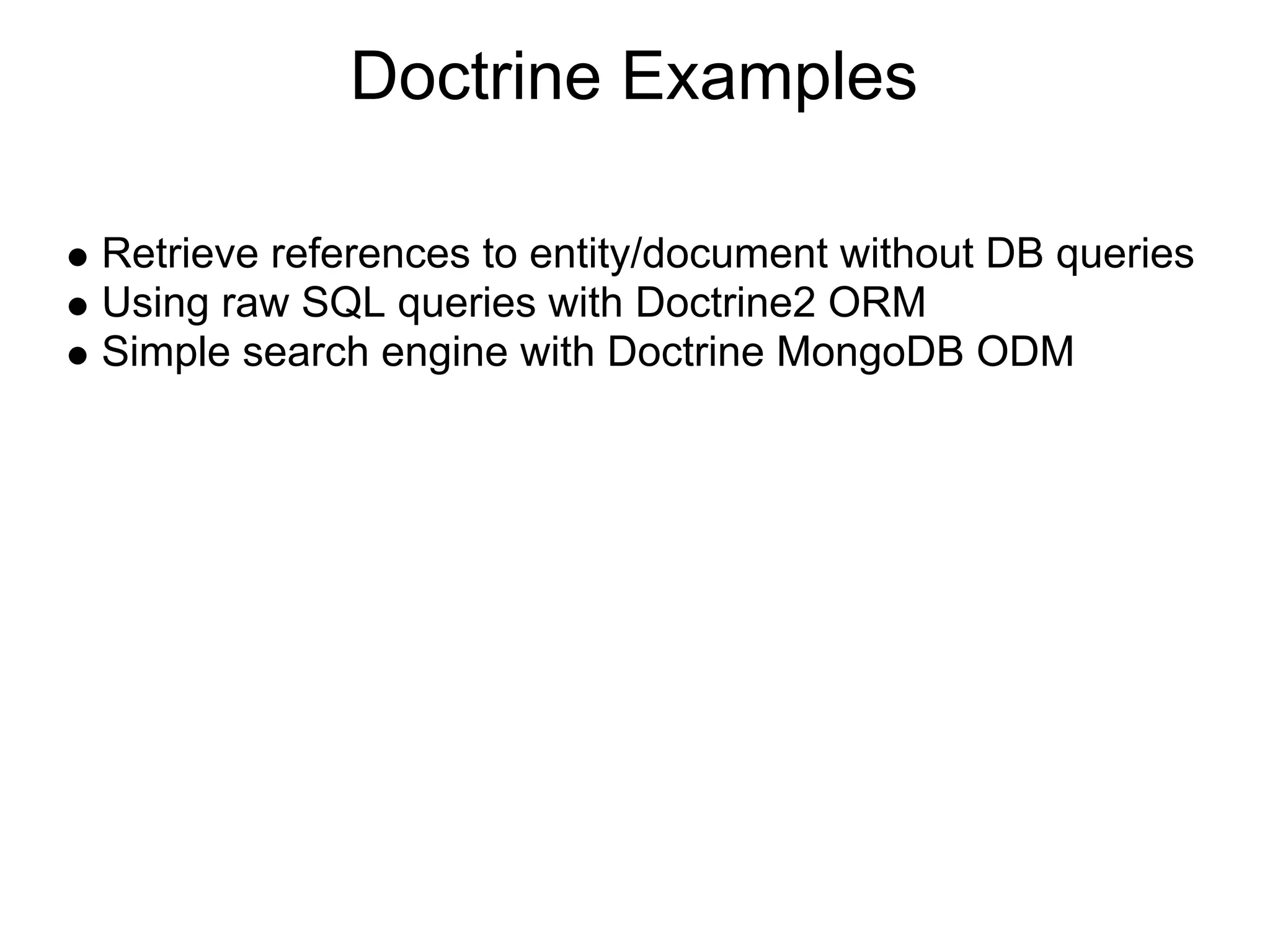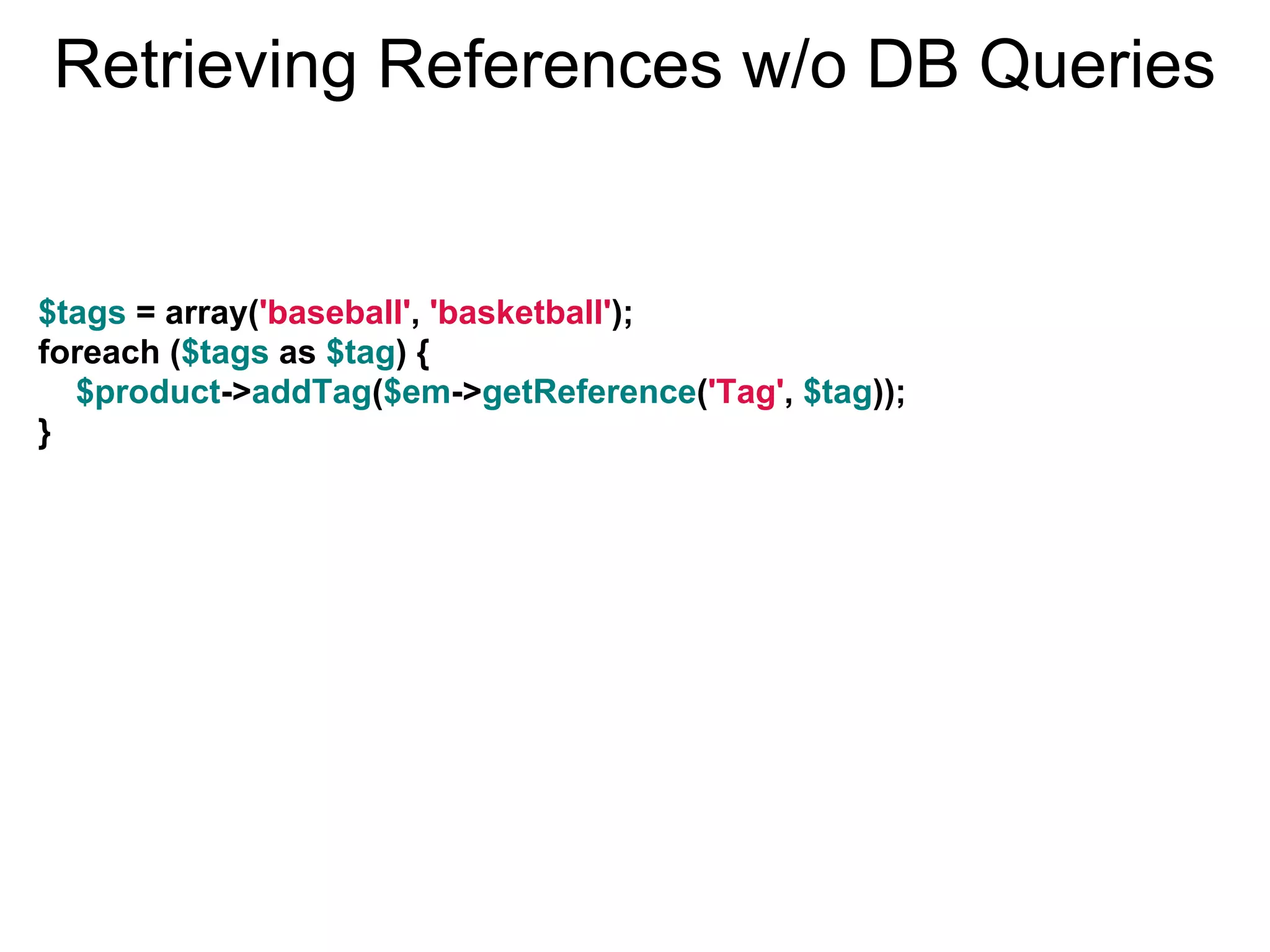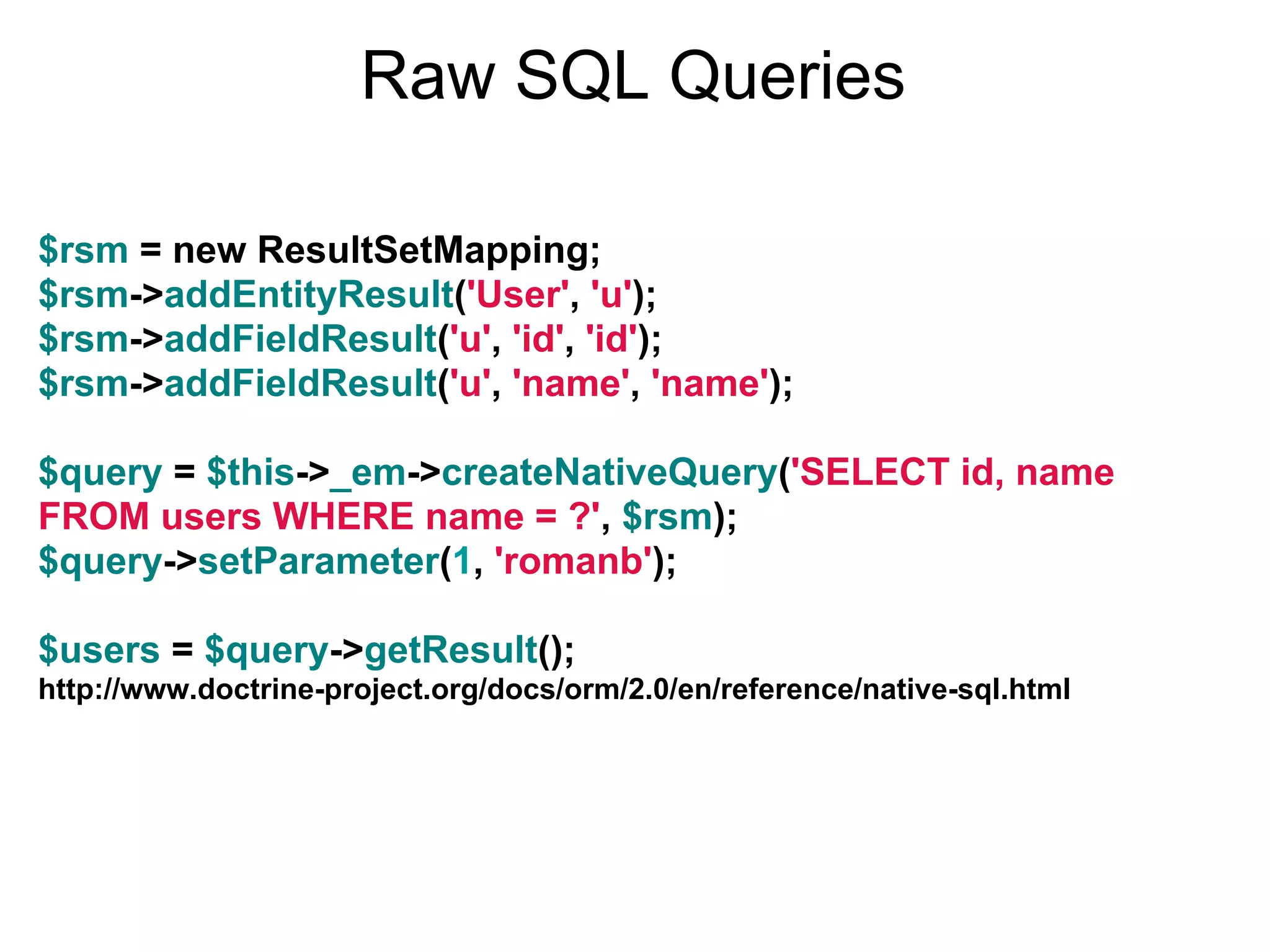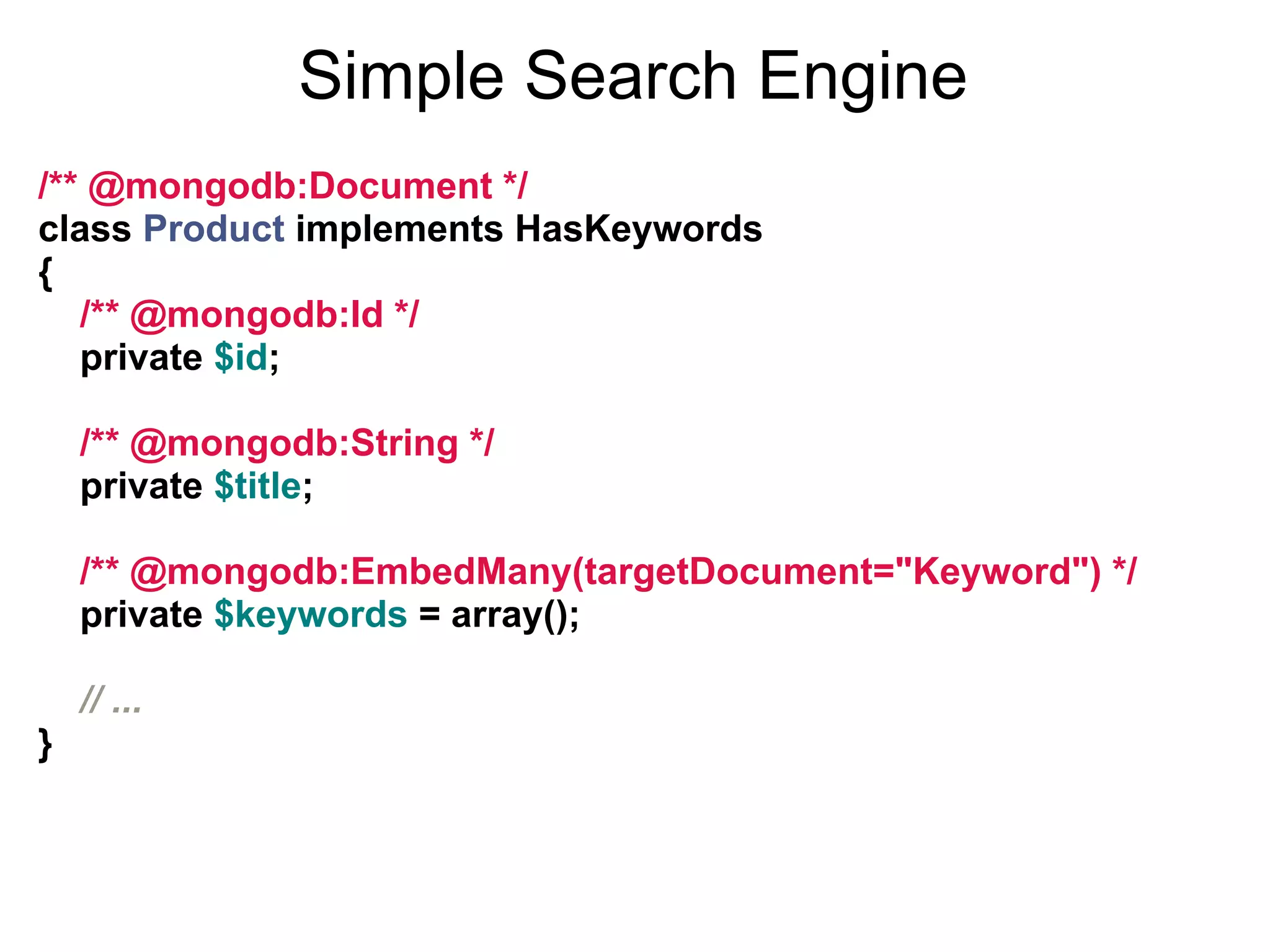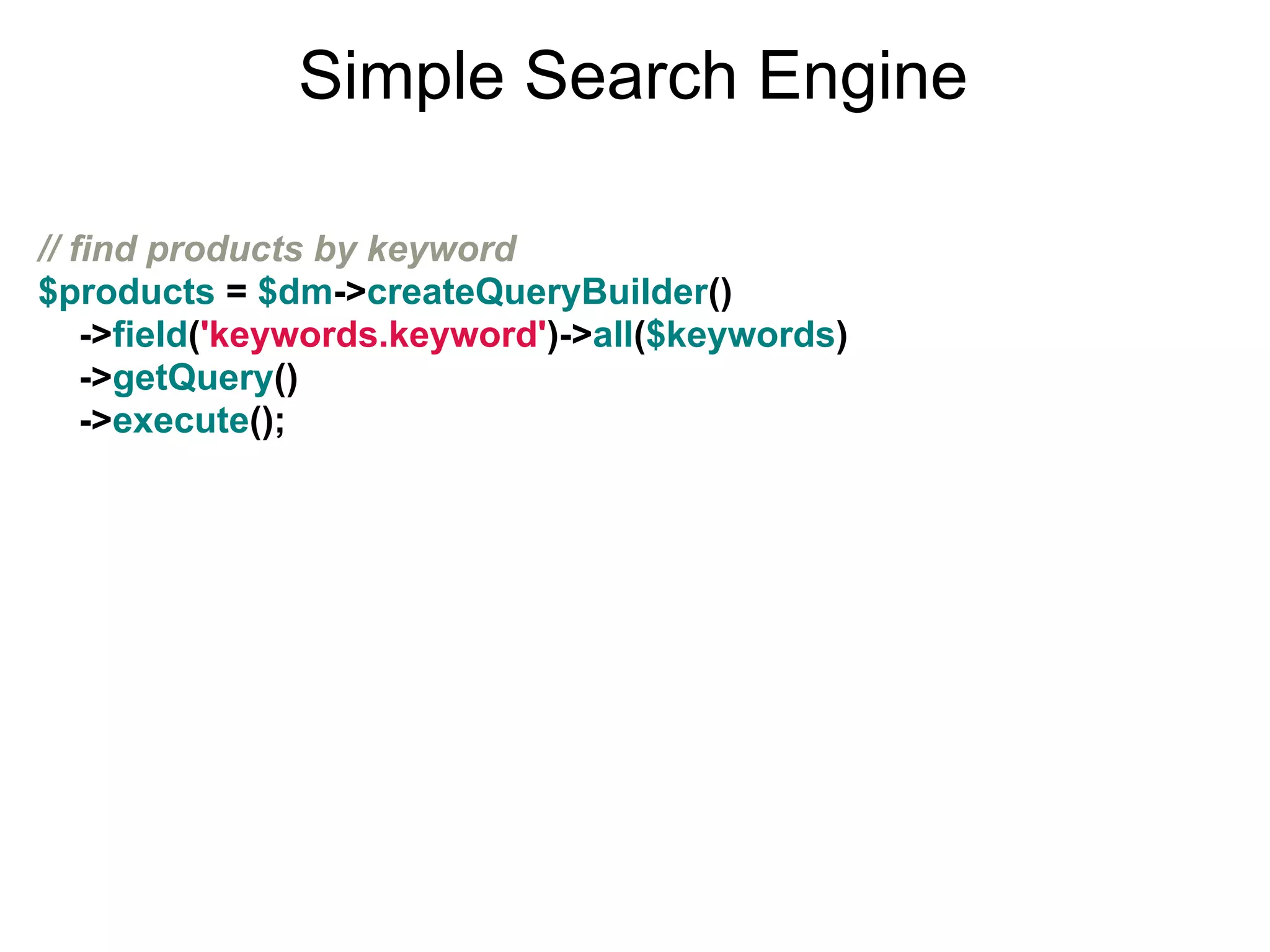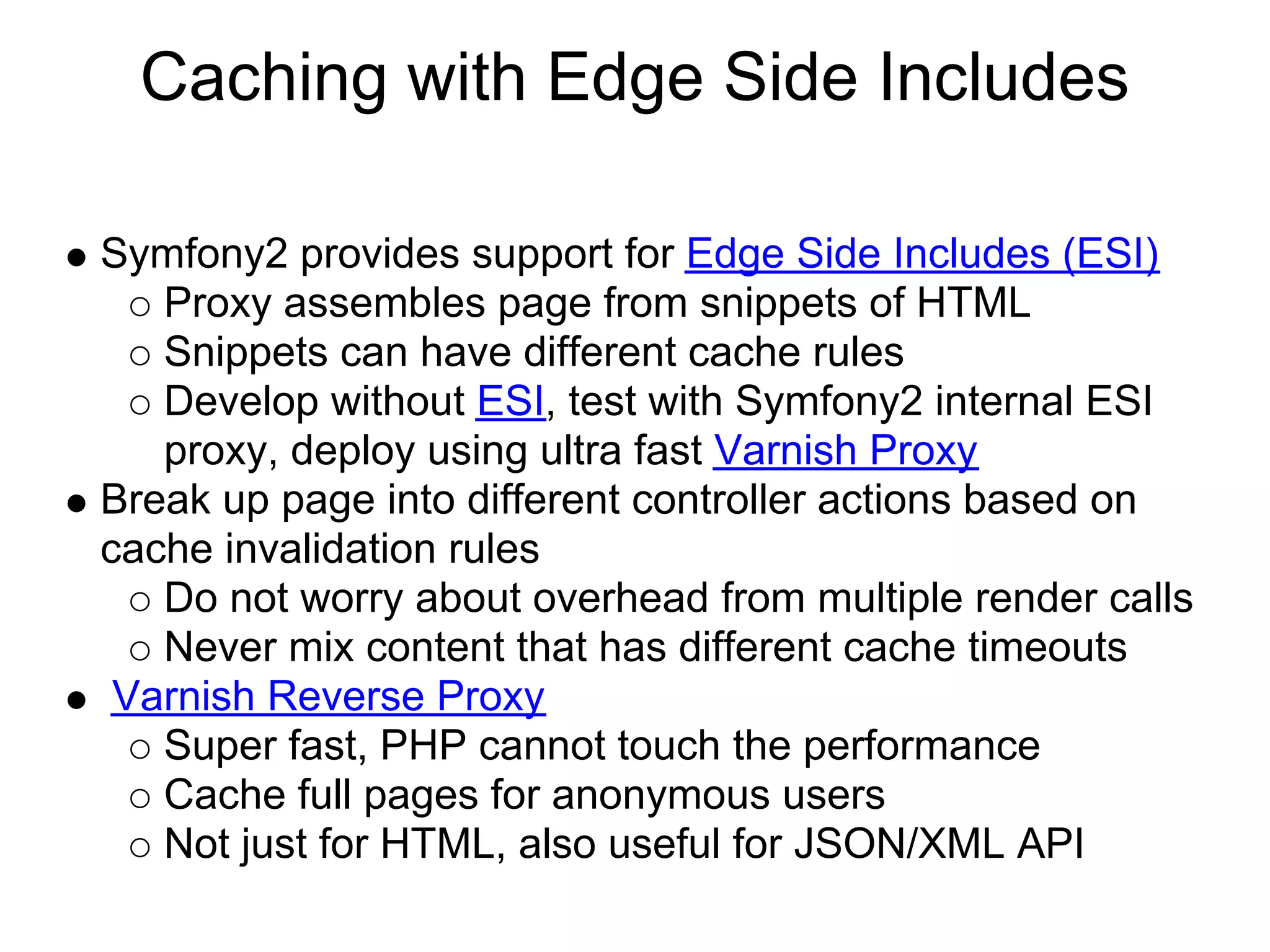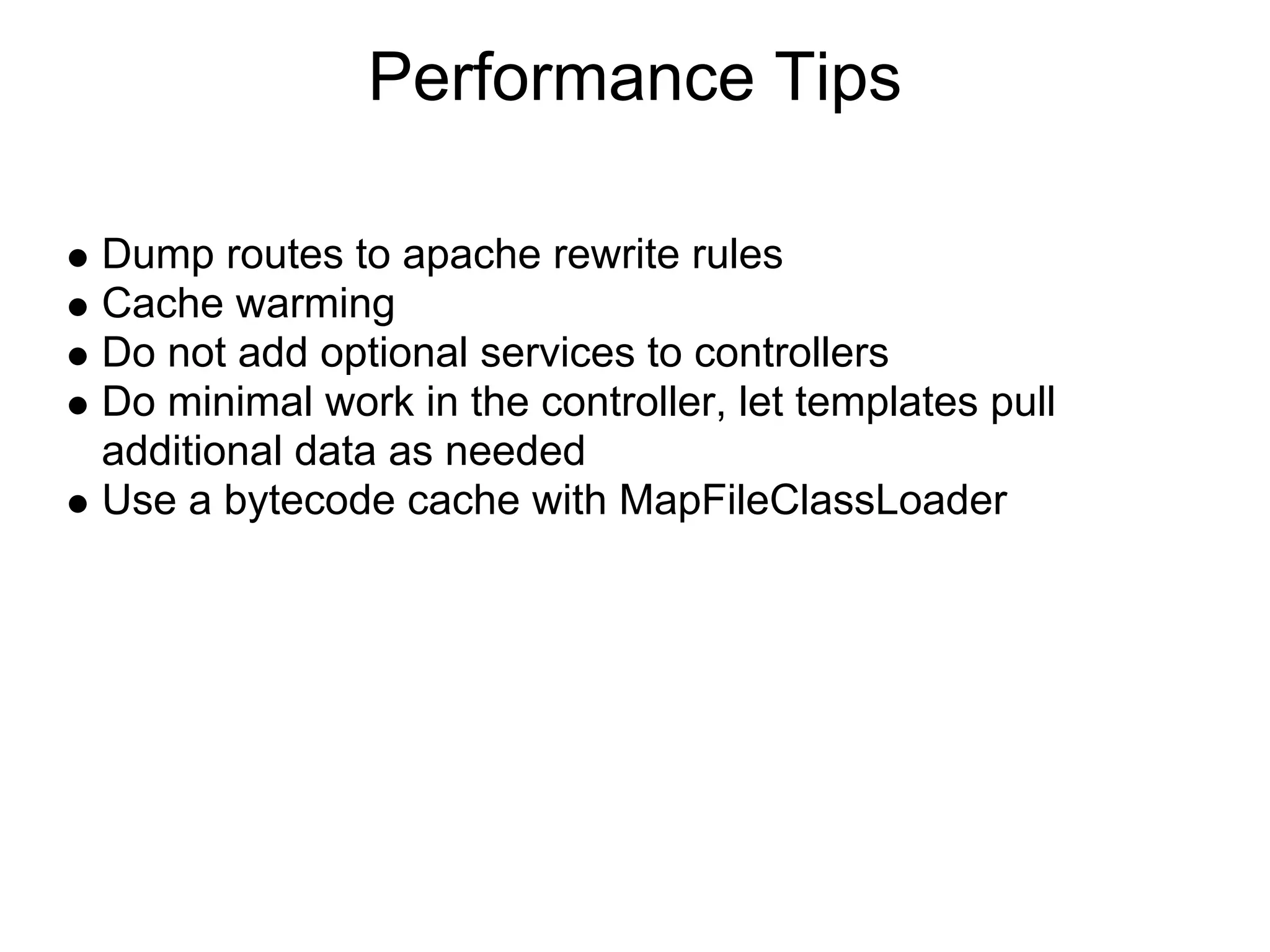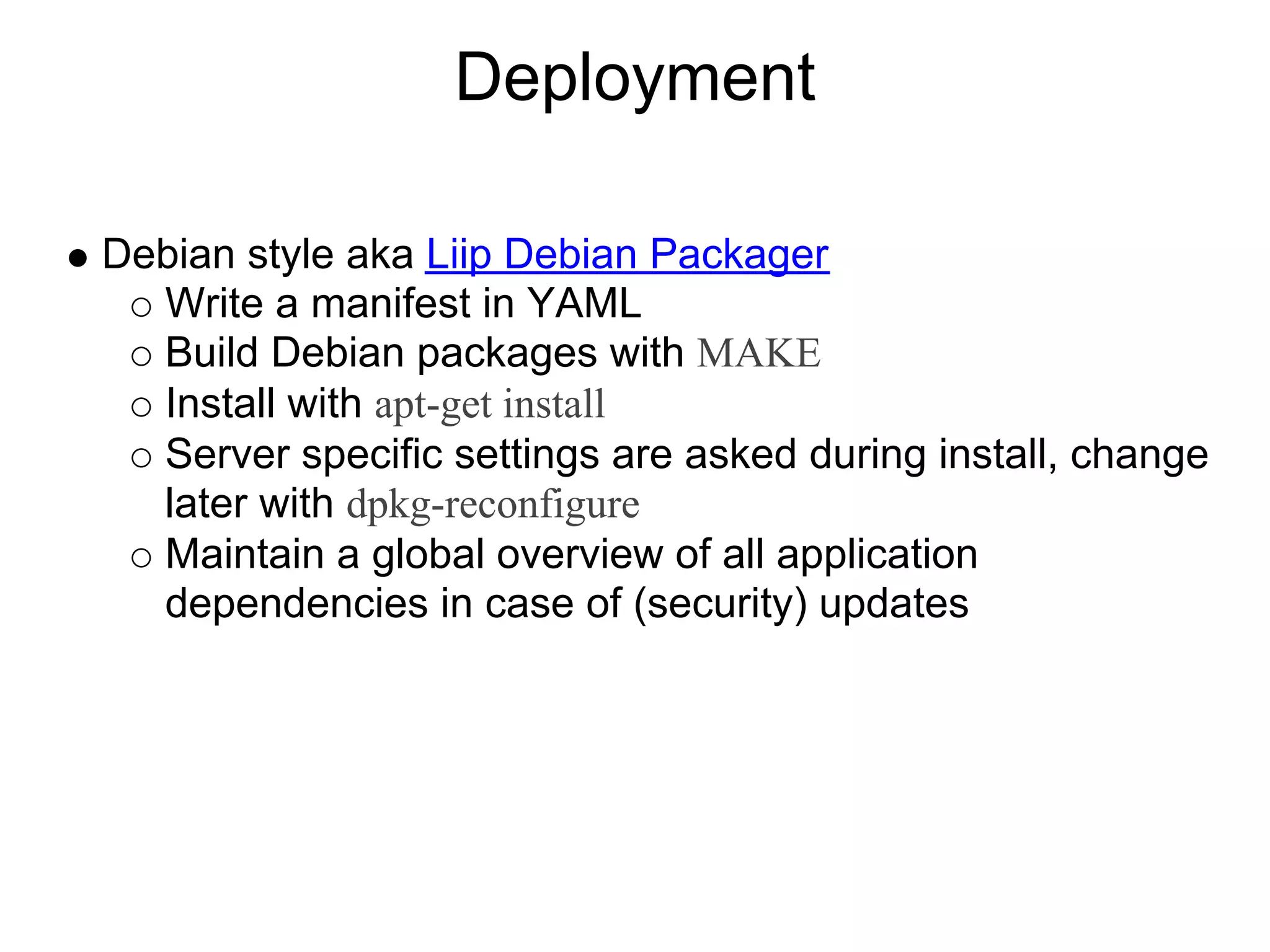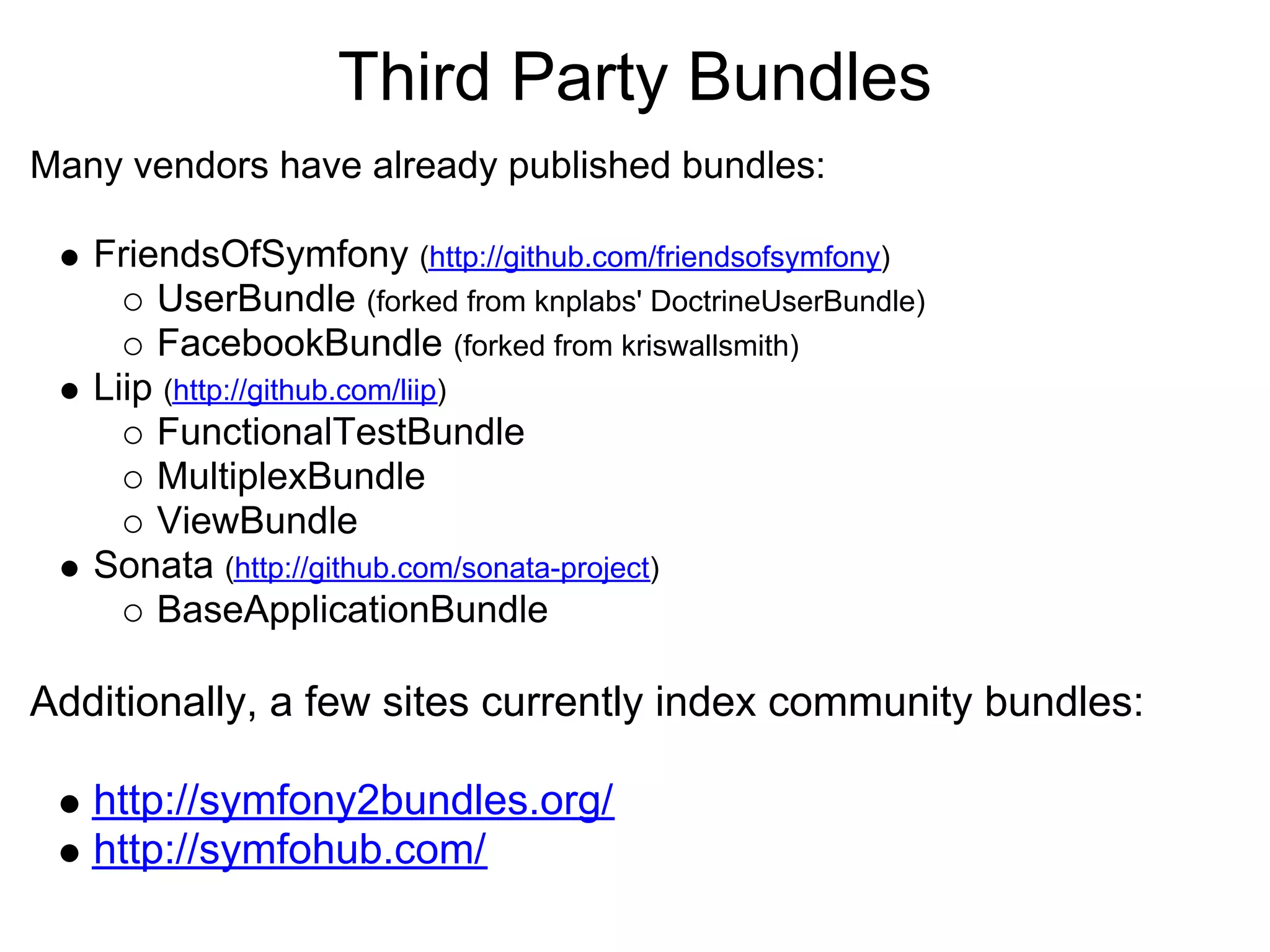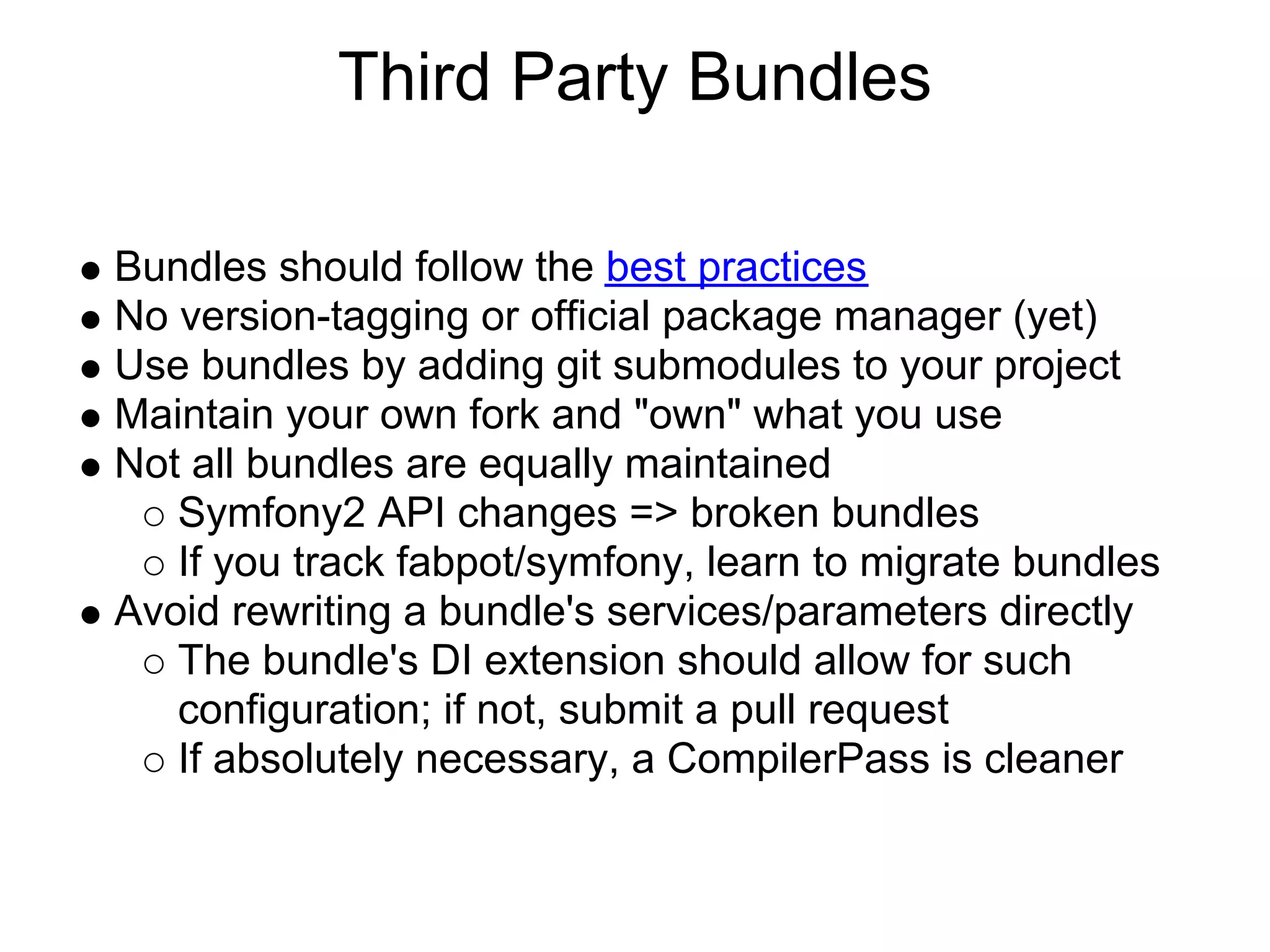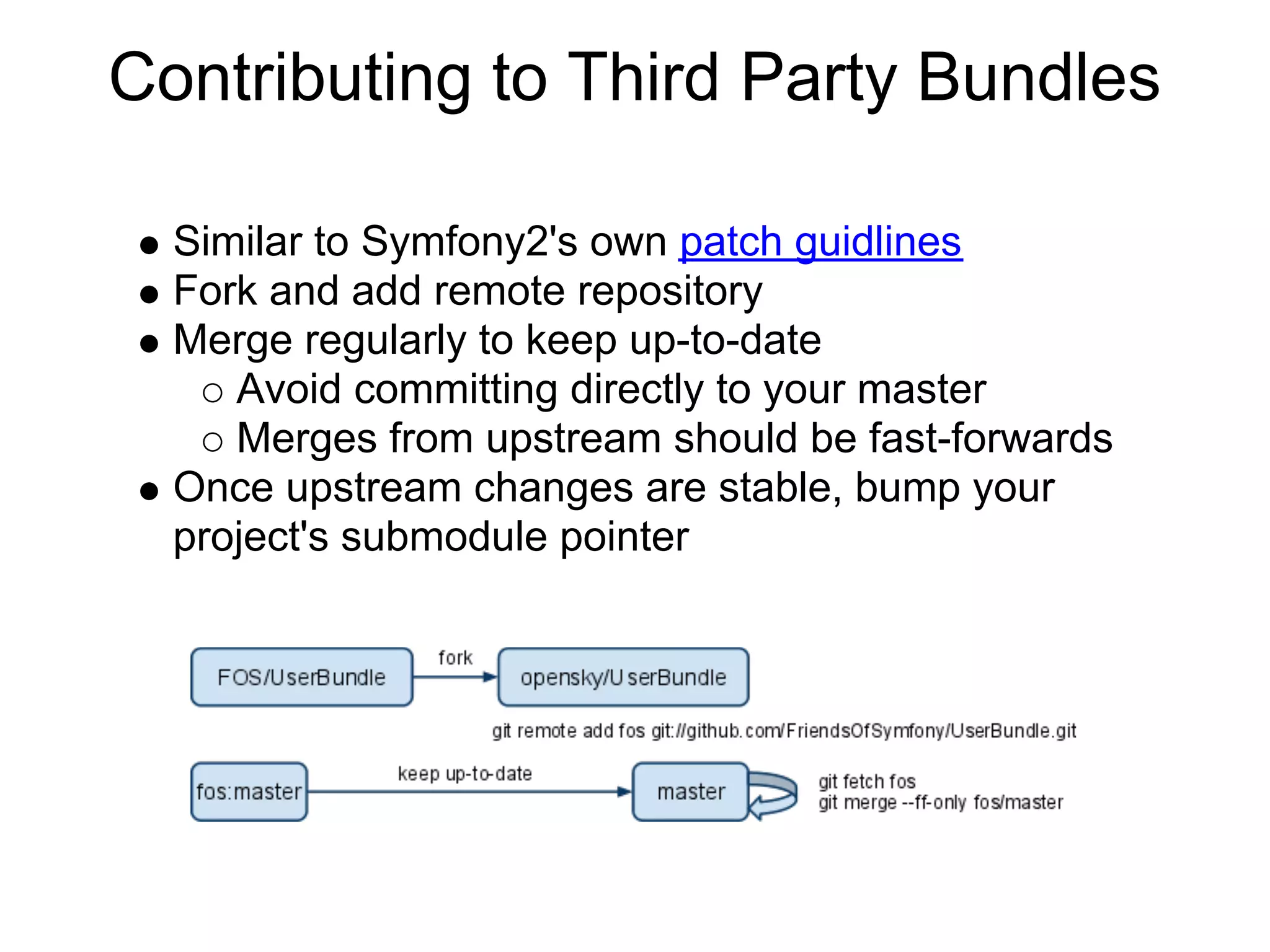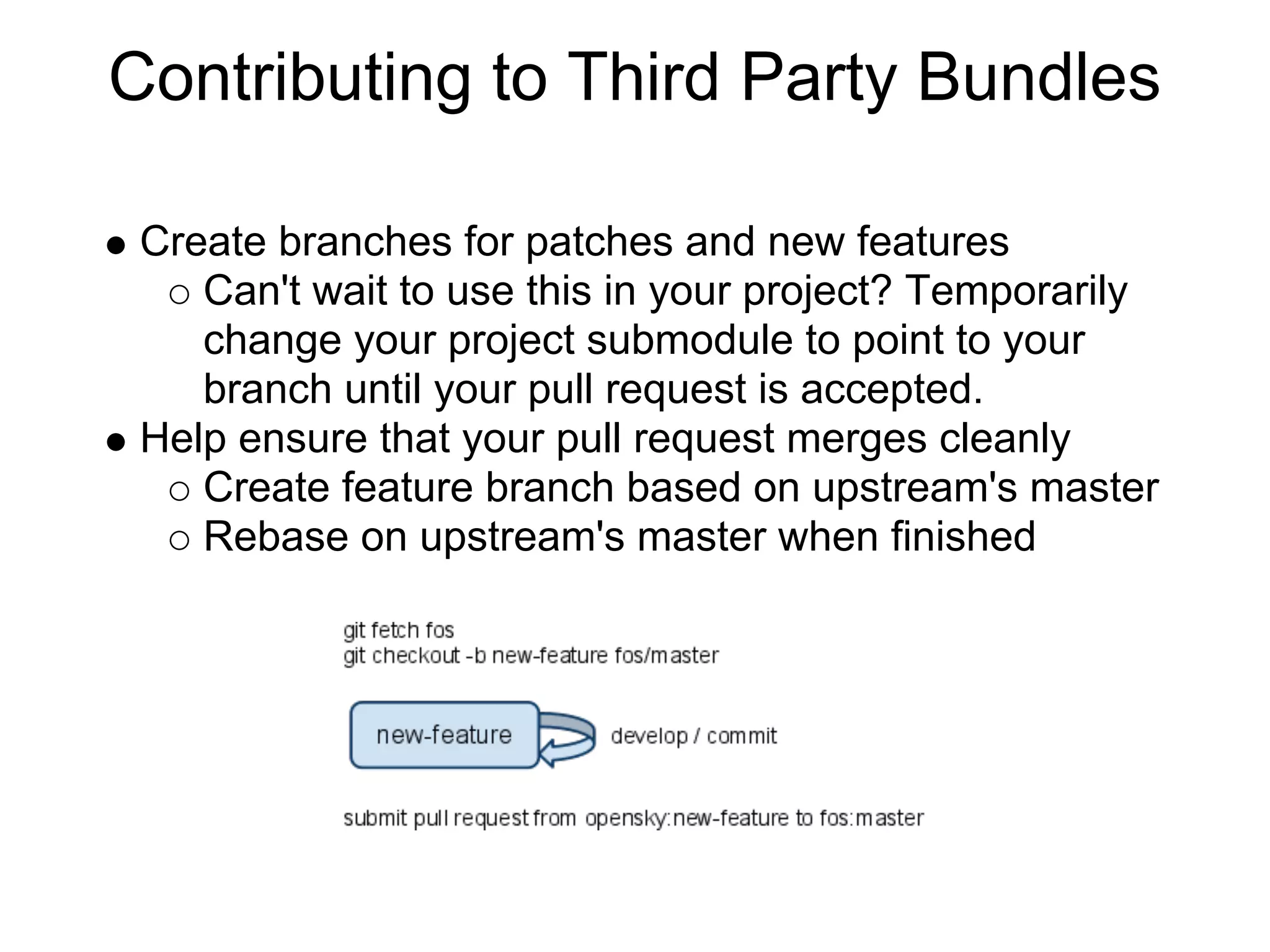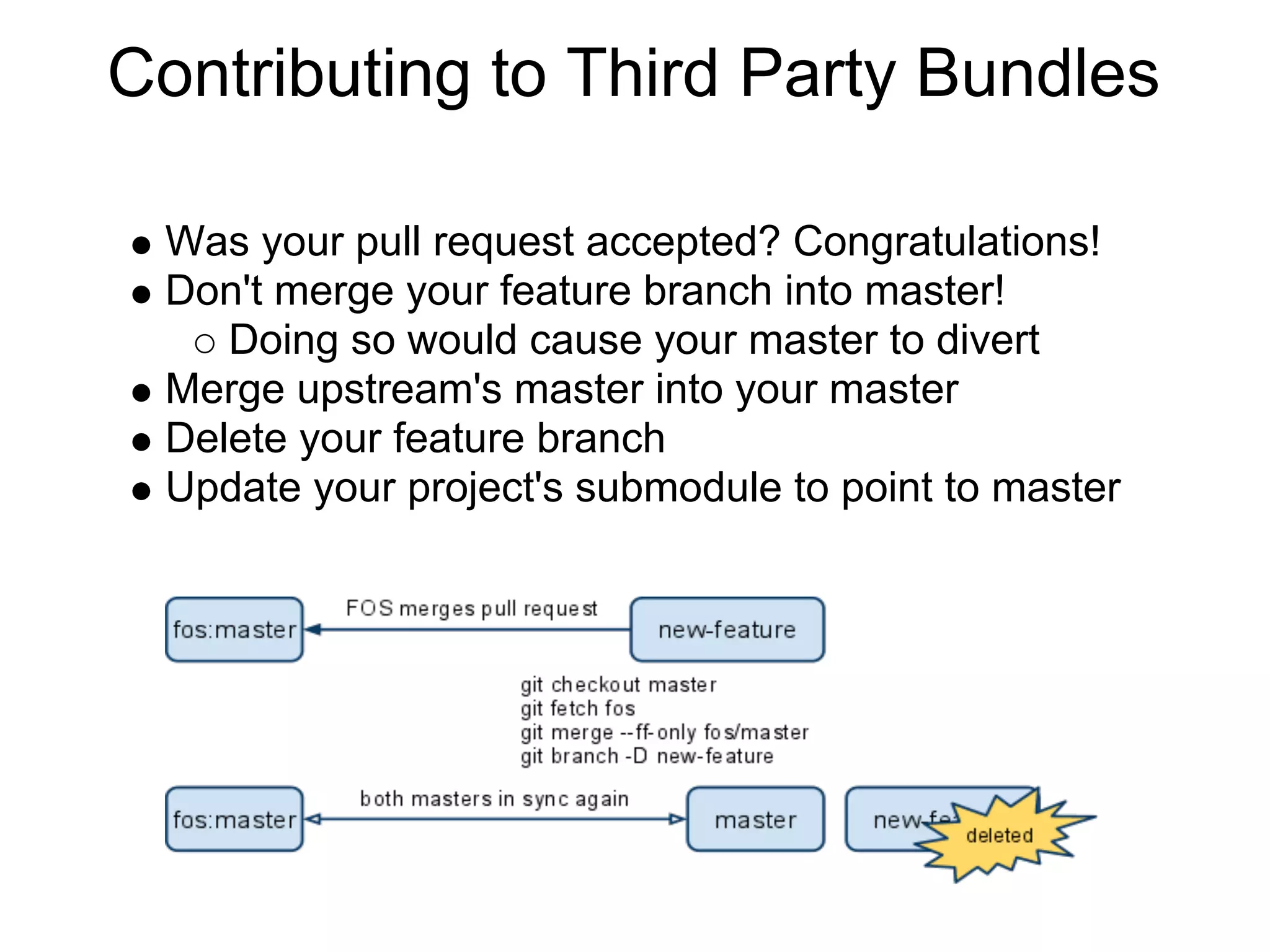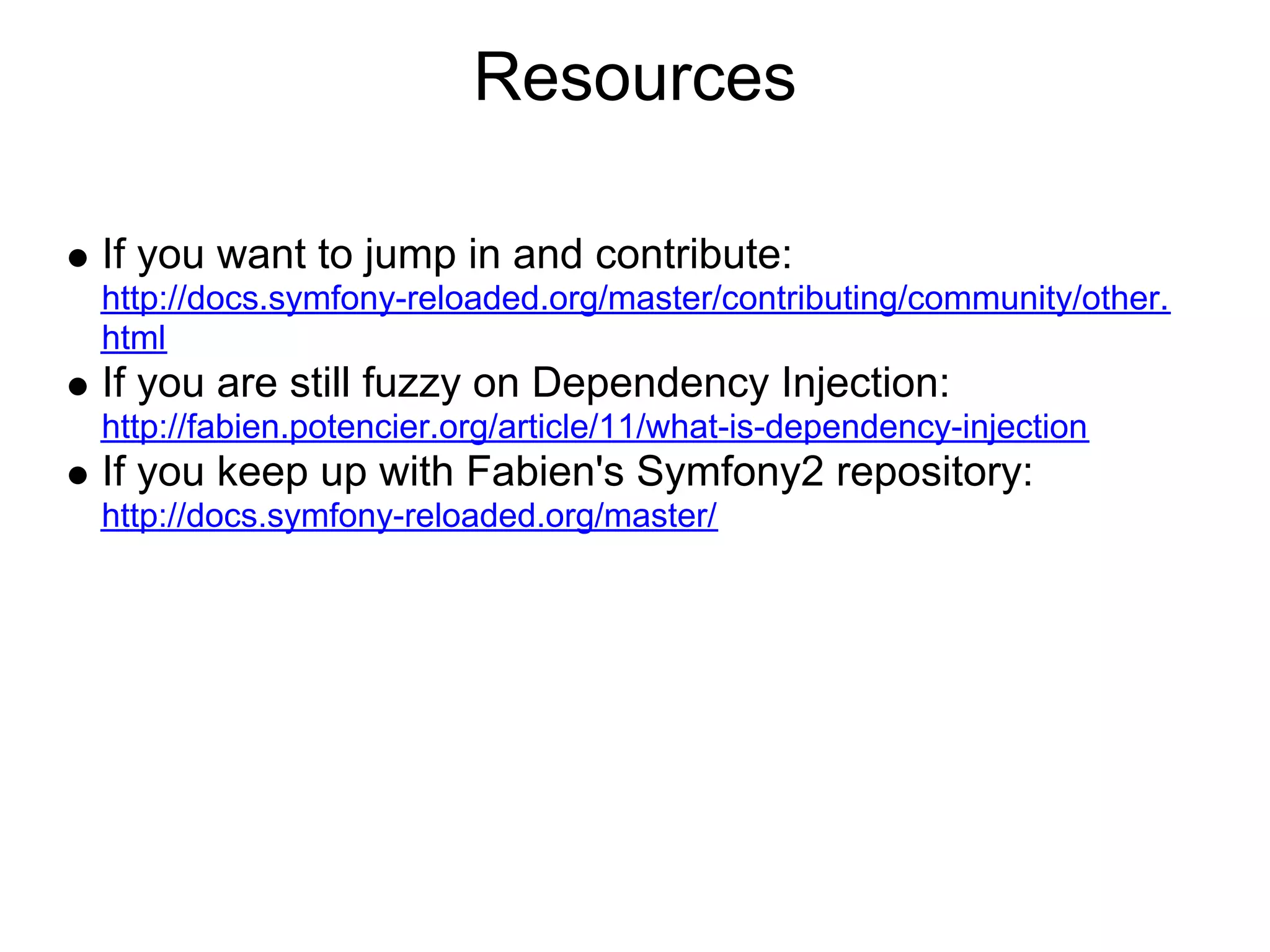This document provides an overview of key concepts for developing applications with Symfony2 including: setting up the framework, code flow, dependency injection, configuration, controllers, applications, Doctrine integration, caching, performance tips, asset management, testing, deployment, third party bundles, and resources for contributing to Symfony2. It discusses service definitions, controller choices, application choices, Doctrine examples, caching strategies, performance optimization techniques, testing approaches, deployment options, and how to work with third party bundles.

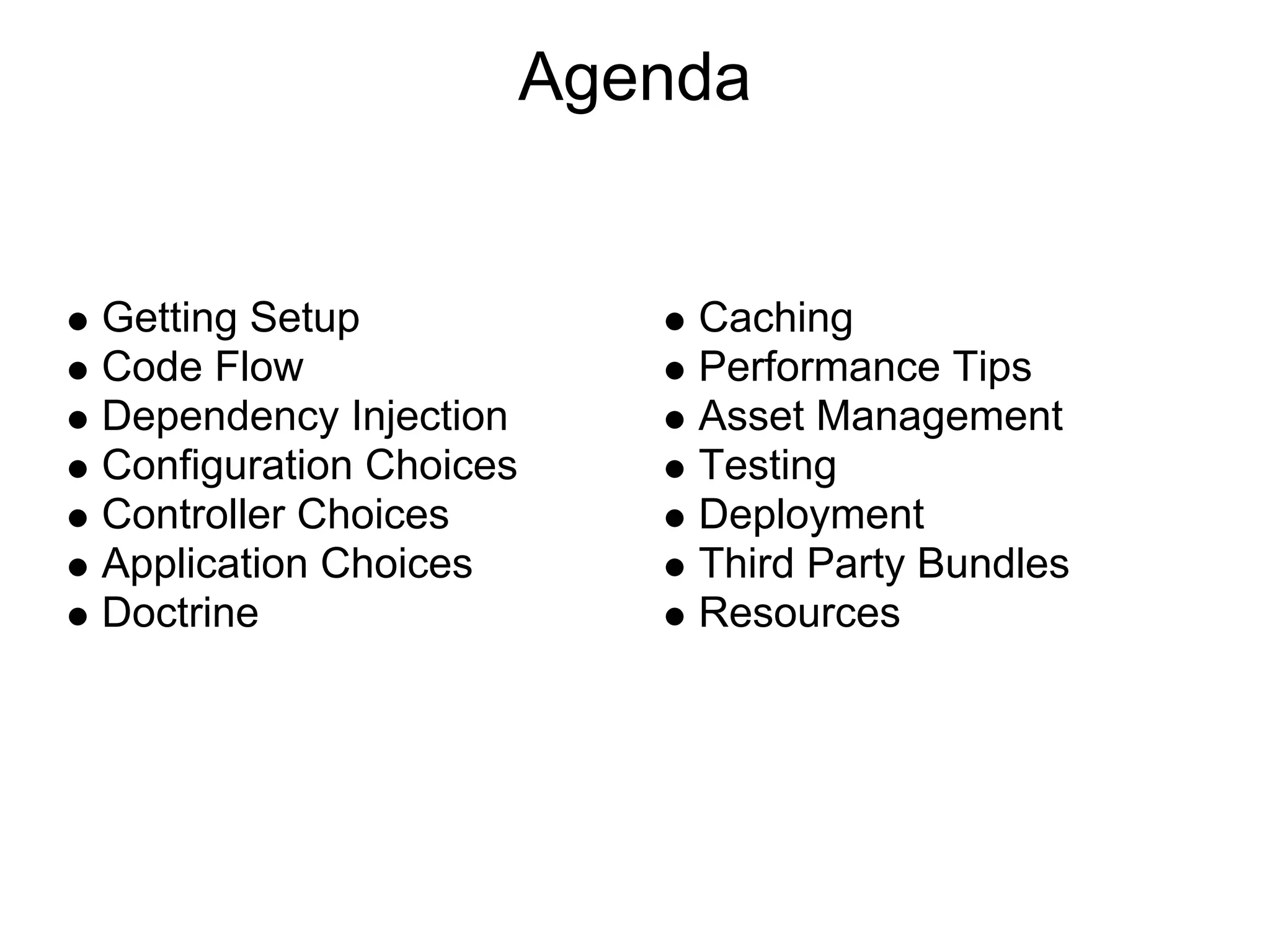

![Code Flow 1. Frontend Controller (web/app[_dev].php) Loads autoloader Creates/boots kernel Creates request (from globals) and passes to kernel 2. Kernel Loads app config (app/config/config_[prod|dev|test]) Resolves URL path to a controller (go to 3.) Outputs response returned by the controller 3. Controller Loads model and view Potentially creates a sub-request (go to 2.) Creates response and returns it](https://image.slidesharecdn.com/symfony2fromthetrenches-110209123435-phpapp01/75/Symfony2-from-the-Trenches-4-2048.jpg)
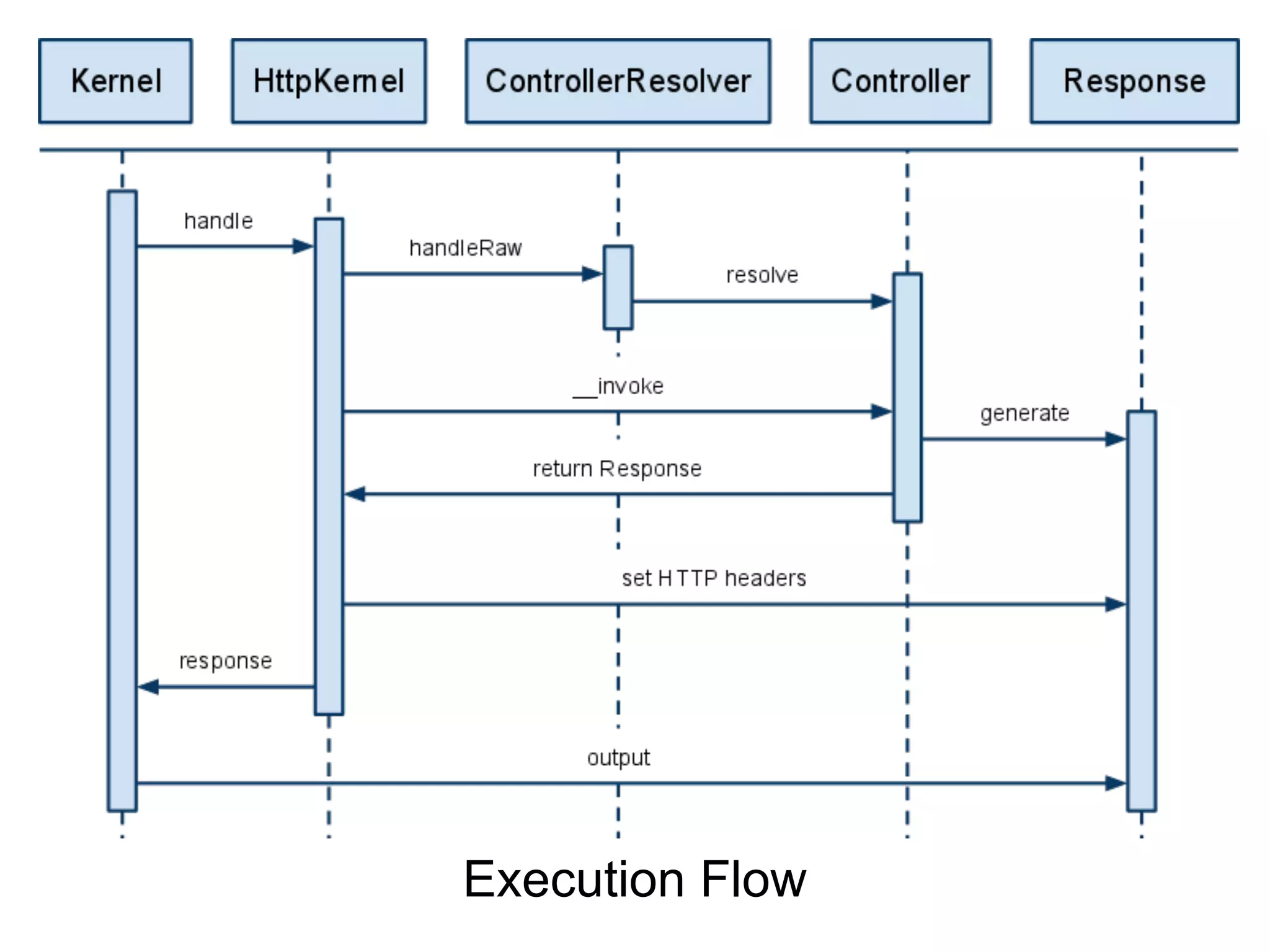
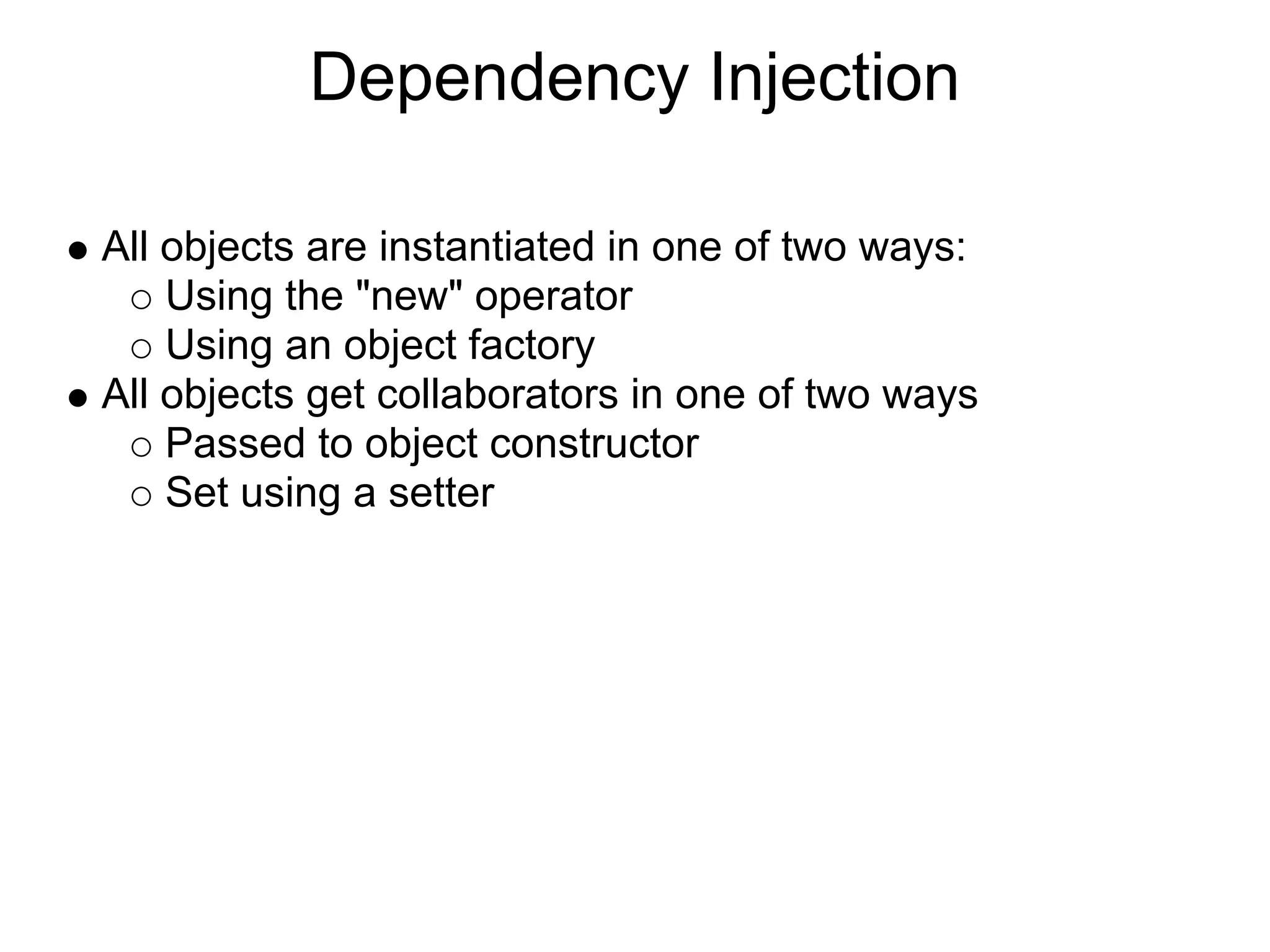


![<?php class cachedDevDebugProjectContainer extends Container { /** * Gets the 'sitemap' service. * * @return BundleAvalancheSitemapBundleSitemap */ protected function getSitemapService() { return $this->services['sitemap'] = new BundleAvalancheSitemapBundleSitemap(); } /** * Gets the default parameters. * * @return array An array of the default parameters */ protected function getDefaultParameters() { return array( 'sitemap.class' => 'BundleAvalancheSitemapBundleSitemap' ); } } Service Definitions Are Dumped to Raw PHP](https://image.slidesharecdn.com/symfony2fromthetrenches-110209123435-phpapp01/75/Symfony2-from-the-Trenches-9-2048.jpg)


